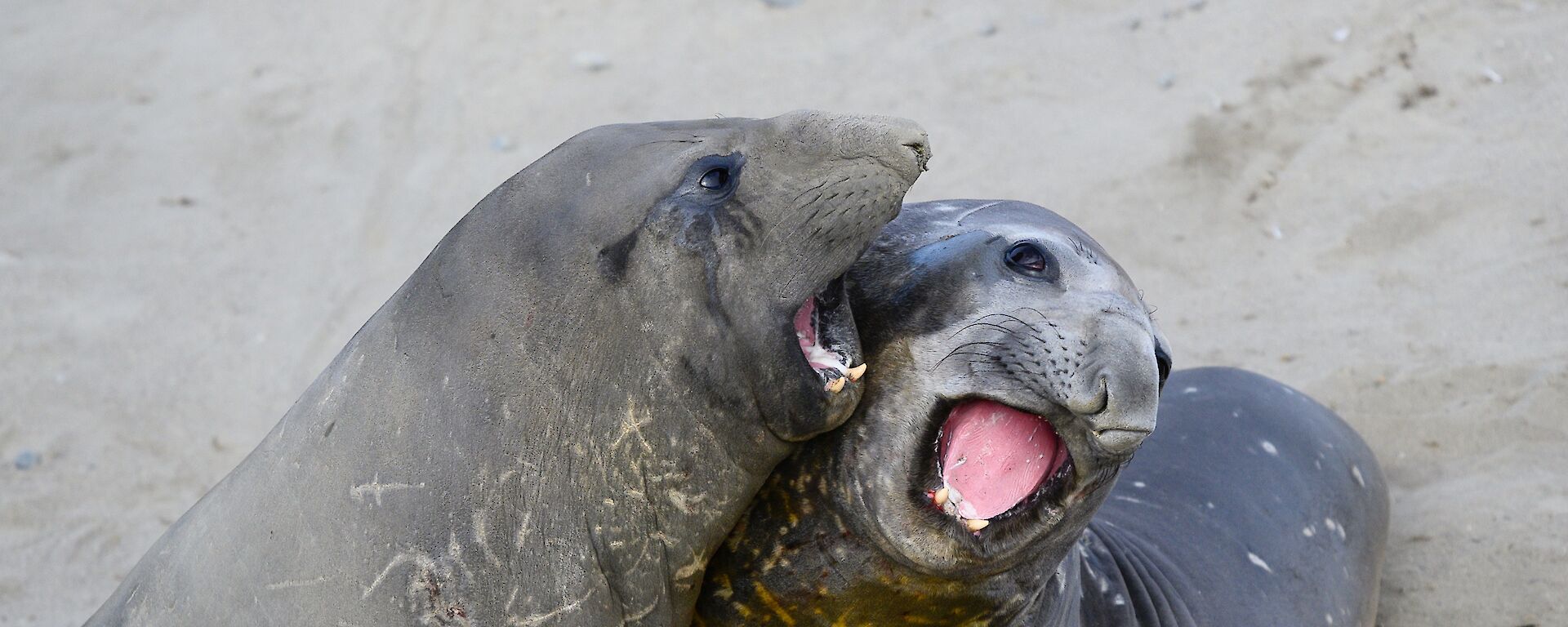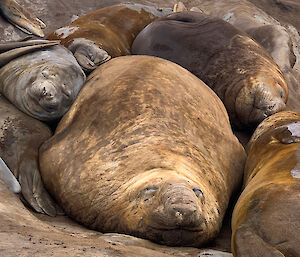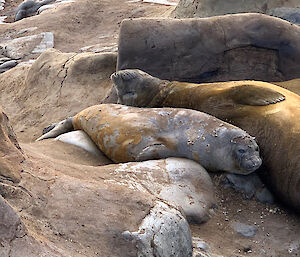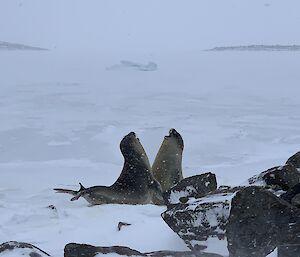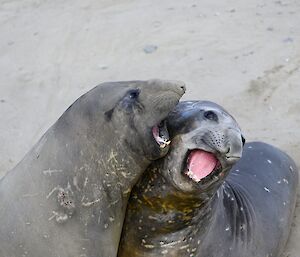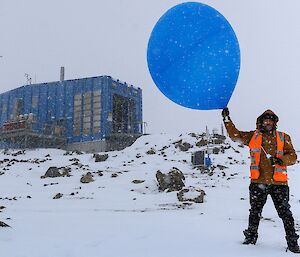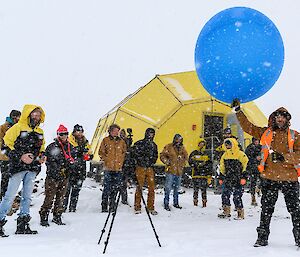At Davis we get to enjoy quite a variety of wildlife, but none so dominating to all the senses as the local elephant seals. The southern elephant seal (Mirounga leonina) uses a number of sub-antarctic islands and peninsulas to breed and pup, but they also like to travel. Here in the Vestfold Hills we are lucky to have a substantial population visit each year for (what is rather dramatically termed) their catastrophic moult. The ‘ellies’ congregate on beaches, in cosy wind-protected corners and in pre-established wallows to hang out together as they lose and replace their entire coat of hair. Most of the seals that visit the Vestfold Hills are young (ish) males finding their way in the world…and this makes for some interesting wildlife watching for us! The ellie seals on the beach at Davis can go from big ‘practice’ fights as the males work out how to assert their dominance, growling and throwing themselves at each other, to all cuddling together on the beach and snoring their heads off…it’s really quite endearing.
The below photos don’t truly capture the essence of elephant seals — they’re all about sound and smell, and are great at producing large amounts of both. The established ‘wallows’ are mounds formed over many years and are made up of seal hair, excrement, sand and even the odd body, all of which have been compressed and frozen over the years. The seals themselves have quite an aroma as they huddle together, lying in their own excrement (keeping warm is thought to speed up the moulting process). And then there’s the sound — either bellowing during a fight, burping (better out than in) or snoring away, the range and volume of sounds coming from an elephant seal wallow is very impressive. But they also have beautiful eyes and even a snotty nose can seem quite cute at times.
Our exposure to the seals is limited to their time on land — when they look very ungainly as they attempt to heft their huge weight (up to 4 tonnes) around — but under water must be a completely different story. The seals are built for diving to great depths (over 2000 metres), holding their breath (up to 2 hours) and foraging over great distances (1000s of kilometres). They are truly remarkable animals that we are very privileged to spend time with. Soon though all our seal friends will depart as they finish their moult and go looking for a well-deserved meal. The sea ice is forming quickly at Davis this year and it means those seals who have left their moult until late in the season have a very long shuffle (a few kilometres, poor things) across the ice before they can reach open water and head north again.
We wish them well and will miss them when they’re gone as they really are great characters and fascinating animals.
Rachel McInerney
Environmental Officer, Davis Aerodrome Project

